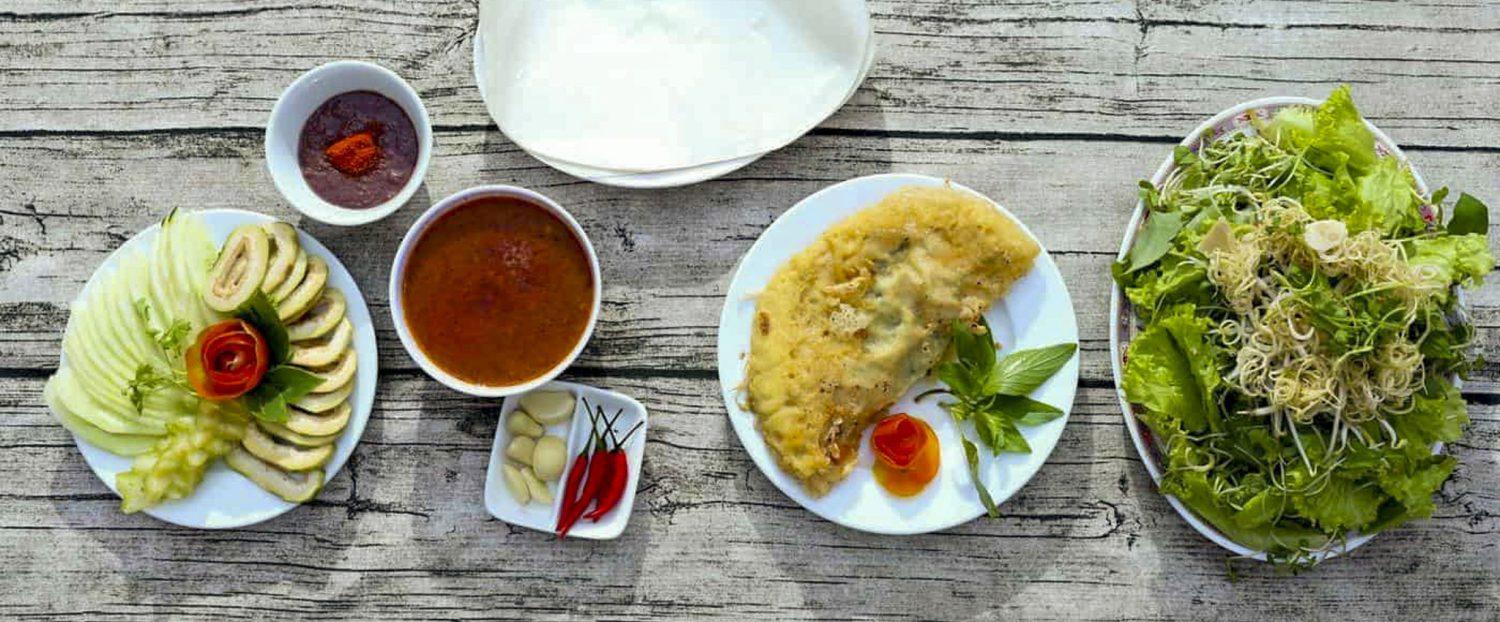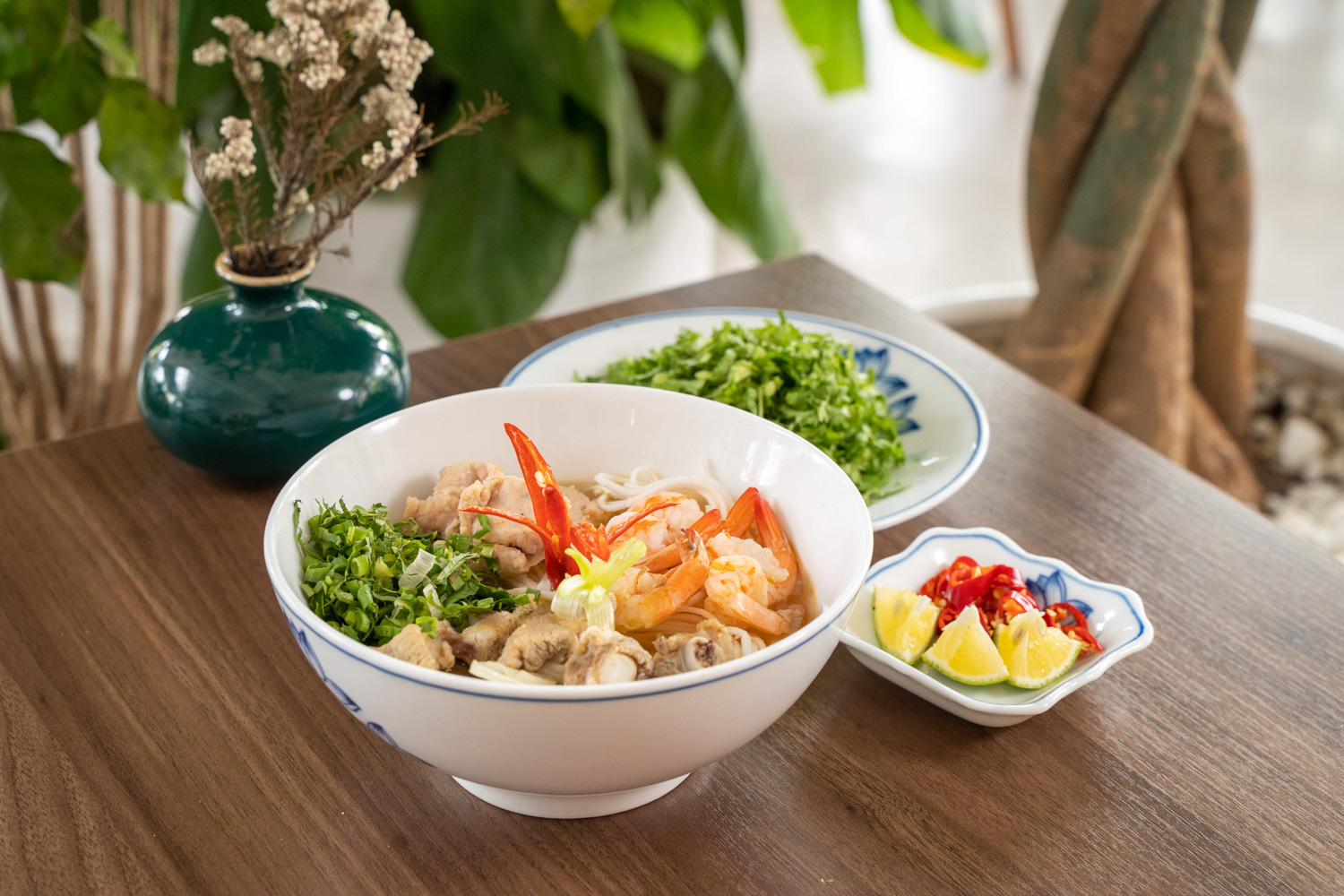The crystal-clear waters of the Son River (Phong Nha, Quang Binh) originate from countless underground streams flowing through hundreds of limestone caves. The poetic and serene river is home to a quiet yet remarkable tradition — the carp farming village that has taken root despite nature’s harsh challenges. From this perseverance, the renowned Son River carp brand was born.
This article invites visitors to discover the inspiring story of the Son River carp village, where a local delicacy is lovingly nurtured in the heart of a UNESCO World Heritage site.
How a carp gave rise to a famous fishing village
The history of the Son River carp farming village
According to residents, carp farming on the Son River began around 70 years ago. In the early days, small fish cages scattered along the river served as passive income. Each carp took at least 2 – 5 years to raise, yet the selling price was relatively low. Worse still, farmers constantly faced the risk of losing everything during the flood season.
Despite natural hardships and threats, the local people remained steadfast in their commitment to carp farming. From humble, makeshift cages, they boldly innovated to build a sturdier system of fish pens using metal mesh, wooden frames, and plastic drums. Their determination to preserve this traditional livelihood has allowed the Son River grass carp fishing village to grow steadily, eventually gaining recognition as a proud culinary symbol of this heritage region.
With its wide, winding river, clean water, and abundant natural food sources like algae and moss, the Son River provides ideal conditions for carp to thrive. As a result, Son River carp offer a fresh, firm, and naturally sweet flavor, rivaling that of wild-caught fish.
To meet growing market demand, what began with just a few pioneering households has evolved into a thriving carp farming village, now home to over 400 fish-farming families operating more than 700 floating cages. As the market expanded and output became more stable, locals gradually scaled up their operations, supplying fresh carp to local markets, restaurants, and resorts, and eventually to cooperatives and factories producing packaged carp fishcakes.
Fish farming has since become a key economic driver for the local community, producing over 250 tons of carp annually. With bustling trade activity on the river, the local economy has gradually flourished. Some families have improved their livelihoods through fish farming, enabling them to support their children’s education and educational expenses. Others earn income by working as fish traders — purchasing large quantities directly from the floating cages and distributing them to restaurants, resorts, and businesses.
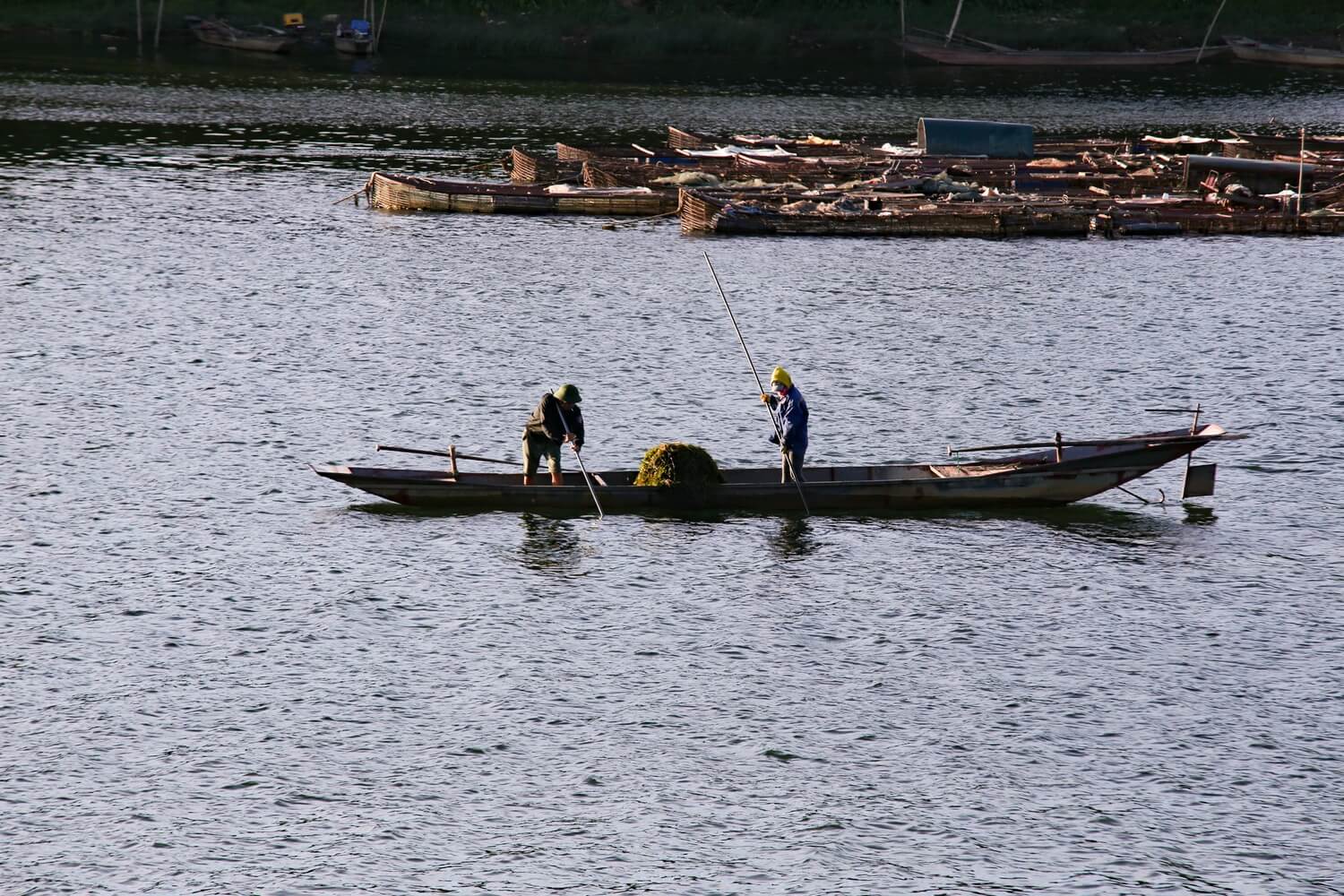
Son River Carp Farming Methods
The unique farming method is the key to the reputation of Son River carp. Locals raise the fish in floating cages made of metal mesh, each measuring about 20 square meters. These cages are kept afloat by connecting them to plastic barrels. Each cage typically holds around 200 carp, and as the fish grow larger, they are transferred into two separate cages to give them more space to develop.
Every day, locals row their boats along the Son River to collect algae, moss, and plankton to feed the carp. As the number of fish cages increased over time, natural food sources in the river became scarcer, requiring even more effort to gather enough feed. Some people set out at dawn in the mist, others work under the scorching midday sun, and many spend the entire day on the river, tirelessly collecting food for their fish.
During the flood season, when the river current becomes too strong, locals switch to feeding the carp with chopped cassava leaves, banana stems, and freshly cut grass. These are also the most exhausting days for the villagers, as they often stay up through the night to keep watch over the floating cages. They must guard against strong winds that could damage the structures or sweeping floodwaters that might carry them away.
In the early days, the cages were made simply from wooden frames wrapped with nets. However, after repeated losses caused by broken cages or damaged barrels, villagers learned from experience and began constructing sturdier cages using metal mesh. After a harvest, they pull the cages ashore to reinforce and repair them before releasing a new batch of fish.
Son River carp festival – Sustainable development orientation in economy and tourism
Recognizing the unique tourism and economic potential of Son River carp, local authorities and residents of Phong Nha Town, as well as Hung Trach and Lien Trach Communes, have organized the annual Son River Carp festival every April. The event aims to promote this regional specialty and attract more tourists to the area.
The contest consists of three parts:
Fish Feed Preparation – Contestants compete by chopping banana stems and other natural ingredients used to feed the carp.
Best Carp Competition – Judges select the largest, healthiest, and most beautiful carp, looking for well-proportioned bodies, shiny scales, and impressive weight. The winning fish is affectionately dubbed the “Carp Beauty Queen.”
Carp Cooking Challenge – Teams prepare their contest carp into three delicious dishes, which are then beautifully presented for the judges to taste and score. Some teams even invite professional chefs to showcase their culinary skills during this part of the contest.
The contest serves as a community celebration that honors traditional livelihoods while encouraging the sustainable and eco-friendly development of the carp farming village. More than just a tourism promotion event, it helps solidify the brand of Son River carp and gradually expands the market for this iconic delicacy born of the emerald-green waters.
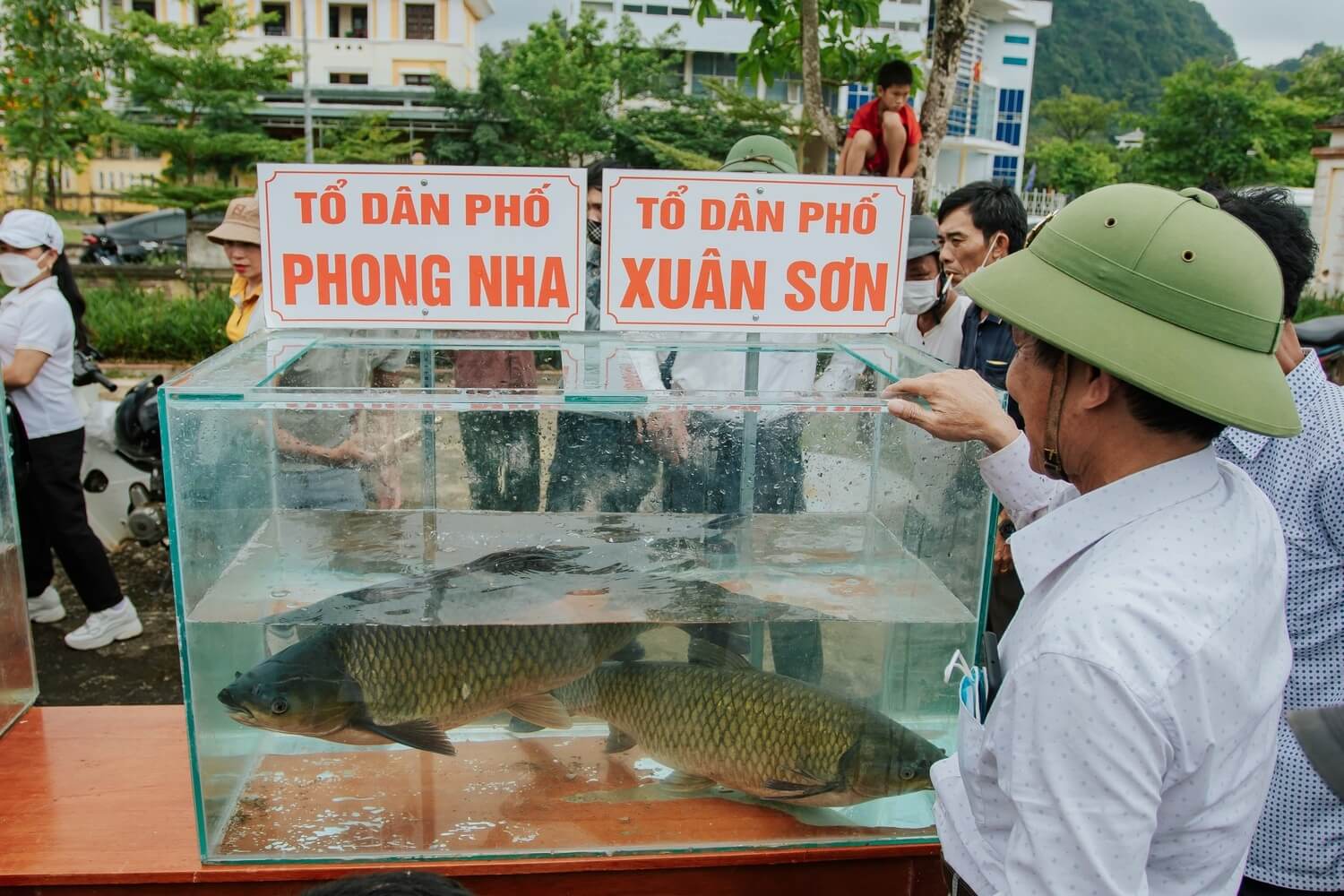
Culinary Highlights – Famous Dishes Made from Son River Carp
1. Carp fish cakes (Chả cá trắm)
Carp fishcakes are among the most famous specialties in Phong Nha and Quang Binh. Golden and crispy on the outside, yet chewy and naturally sweet on the inside, these flavorful fishcakes are typically served with fresh herbs, pickled salad, and rice vermicelli — a combination so delicious, it’s hard to stop at just one bite.
The preparation of this dish is fairly simple. First, fillet the carp and finely mince or blend the meat. Then, mix it with seasonings such as shallots, pepper, fish sauce, dill, and a bit of minced pork shoulder to enhance the richness.
On average, a 5-kilogram carp yields about 2.5 kilograms of fillet. Shape the mixture into small patties, flatten them slightly, and deep-fry until both sides are golden brown. When serving, you garnish with banana blossom salad and a handful of fresh herbs for an eye-catching and appetizing presentation.
2. Carp sashimi salad (Gỏi cá trắm)
This dish is made from thinly sliced raw carp, wrapped in rice paper with fresh herbs. It offers a refreshing, unique flavor without any fishy aftertaste.
To prepare it, cooks must choose a very fresh carp and clean it thoroughly to remove all the scales and slime from the skin. Then, they fillet the fish lengthwise and soak the slices in a bowl of diluted lemon juice with a few ice cubes for about 10 minutes.
Once the fish has firmed up and lost its fishy odor, slice it as thinly as possible and mix it with finely chopped lemongrass, shallots, and galangal. For extra flavor, you can add a pinch of seasoning powder or MSG.
No carp sashimi salad is complete without cheo — the soul of this dish. This special dipping sauce is made by cooking minced carp fillet with shallots, lemongrass, fermented sour broth (canh mẻ), chili oil (sa tế), and a beaten egg. The mixture is simmered and seasoned to taste, creating a rich, savory complement to the fresh fish rolls.
3. Grilled carp with galangal and fermented rice (Cá trắm nướng riềng mẻ)
The fragrant aroma of galangal, the sweet and chewy texture of the carp, combined with the subtle tang of fermented rice (mẻ), make this dish a distinctive and flavorful specialty.
This dish starts with a fresh carp; clean it thoroughly, then either fillet it or cut it into chunks, depending on your preference. Then, you marinate the fish for about 30 minutes in a mixture of fermented rice (mẻ), finely ground galangal, lemongrass, turmeric, a splash of lime juice, and seasonings such as salt, fish sauce, oyster sauce, pepper, fermented shrimp paste (mắm tôm), and cooking oil (or pork fat).
Once the fish is well-marinated, grill it over hot charcoal until both sides are evenly golden and slightly crispy. It’s traditionally served with fresh herbs, green banana slices, sour starfruit, and rice paper for wrapping.
Recommended restaurant to enjoy Son River carp in Quang Tri
Commander Lodge
Located in the heart of Phong Nha town, Commander Lodge is a convenient stop for travelers looking to relax and savor local cuisine. The restaurant offers a diverse menu that blends regional specialties, such as braised carp with turmeric and sour carp soup, with rustic Vietnamese dishes and Western options. It’s a cozy and flavorful dining experience suitable for a wide range of guests.
Chày Lập Restaurant
Located within the grounds of Chay Lap Farmstay in Chay Lap village, Phong Nha commune, Quang Trị Province, this restaurant sits peacefully in a tranquil village surrounded by majestic mountains. It offers both indoor and open-air dining spaces with views overlooking lush green gardens.
Guests can enjoy delicious carp dishes here, along with a variety of other rustic specialties such as grilled chicken with cheo salt, stir-fried local herbal pork with lemongrass and chili, fried apple snail with betel leaves, etc.
In addition, guests staying at Chay Lap Farmstay have the opportunity to enjoy cycling tours through the peaceful countryside and kayaking along the Chày River, where they can admire lush cornfields, gentle riverbanks, and the hardworking daily life of local villagers.
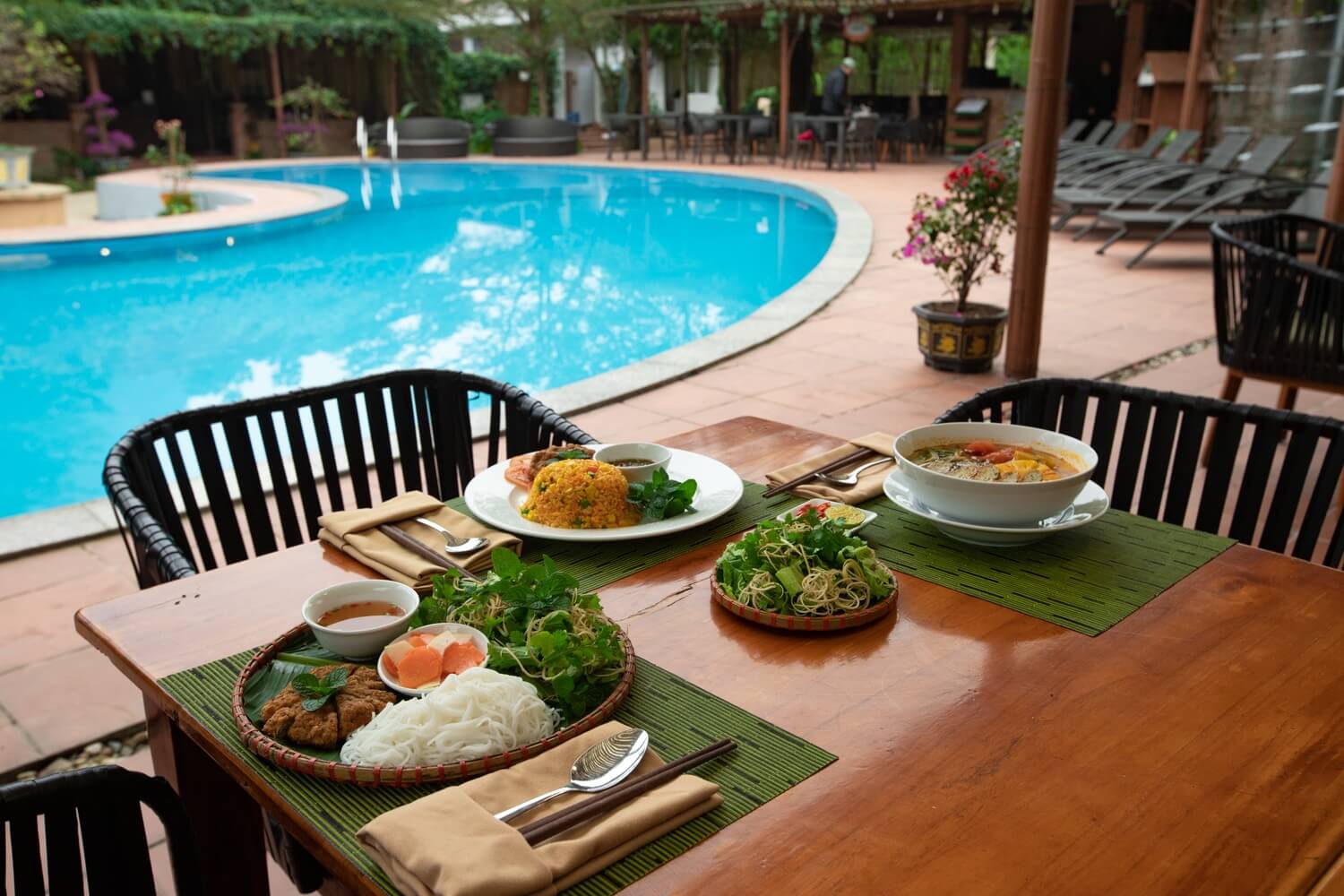
Trắm Sông Son Restaurant
Located at 08 Le Quy Don Street, Dong Hoi Ward, Quang Tri, Vietnam, this cozy restaurant offers a warm atmosphere and a diverse menu featuring around 30 different carp dishes. Visitors can enjoy traditional specialties such as carp fishcakes and grilled carp, as well as creative variations like cheese-tossed carp and more.
From humble floating cages, Son River carp has risen to become a renowned specialty, contributing to the identity of a land once harsh and barren, yet full of vitality. In today’s fast-paced world, the development of traditional craft villages must go hand in hand with preserving the iconic quality of their products and safeguarding the cultural values that define Phong Nha. Today, when people speak of Son River carp, they think not only of a delicious dish, but of a culinary treasure — a harmonious fusion of nature, human effort, and a rich cultural heritage.



